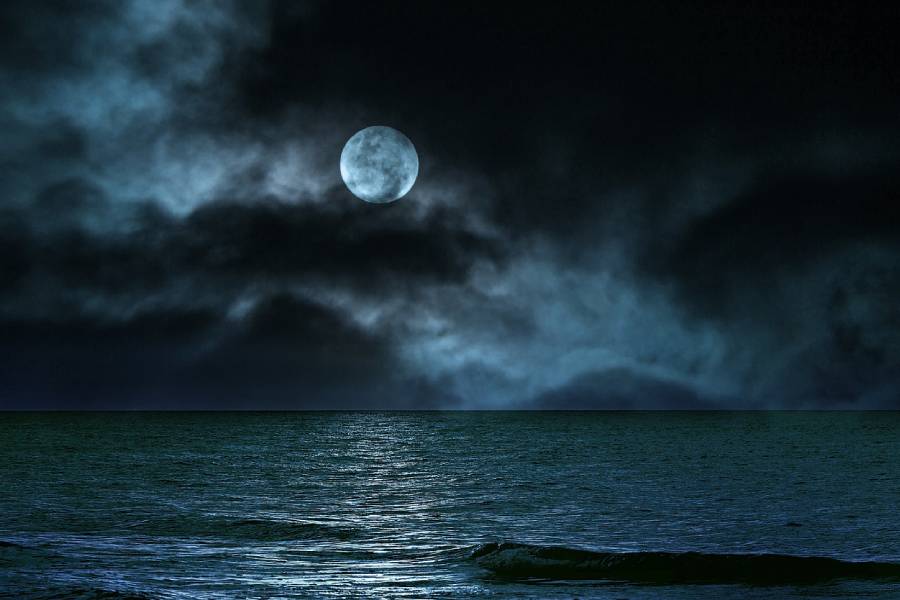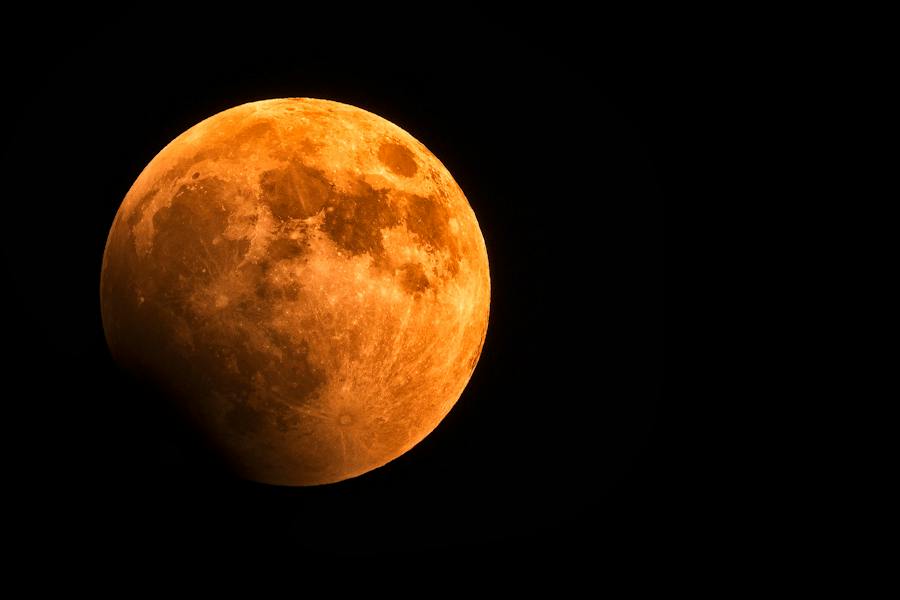Have you ever looked up at the night sky, transfixed by the sight of a bright, full moon? Its luminous glow captivates watchers across ages and cultures. But what is a full moon, and what makes this full moon phase so visually striking during its monthly cycle? Together, we’ll discover more about the moon’s orbital motion and changing angles and cover lunar concepts to shed light on the cosmic choreography behind that shining full moon in the sky.
While a full moon may seem magical, lighting the whole sky when in full bloom, there’s more to the science behind the full moon behavior.
So, let’s dig into the science to reveal the secret workings behind this astronomical phenomenon!
What Is a Full Moon?
A full moon occurs when the moon is positioned directly opposite the Sun, making its illuminated side face the Earth.
This alignment creates a bright, round appearance in the night sky, with the entire face of the moon visible from our perspective. The phenomenon happens approximately every 29.5 days as the moon completes its orbit around the Earth.
This cycle depends on how we see the illumination of the moon. A full moon occurs when the Earth is positioned between the Sun and the Moon, with the three celestial bodies aligned in a straight line. This arrangement causes the entire illuminated side of the Moon to face the Earth, making it appear fully illuminated. Although the moon appears to be full for three days to the naked eye, the point where the moon is actually “full” lasts only for an instant.
Full moons have been observed and noted throughout history. They are often associated with cultural and natural events. They present a captivating and familiar sight in the night heavens.

Cultural and historical significance of full moons
The cycles of the moon, particularly the full moon, held significance in ancient times, as the full moon marked the passage of time and even seasons. Many ancient cultures used a lunar calendar using full moons as the starting point for new months or seasons.
As the largest object seen every 29 days, the full moon has persisted as a symbol of creation, fertility, growth, abundance, darkness, and light in many cultures.
In agriculture, for instance, farmers observed and believed that their crops would be affected if the plants were in full bloom on full moon days.
For instance, in Hinduism, the days when the moon enters the full moon lunar cycle are celebrated by fasting. The full moon, also referred to as Purnima, is dedicated to worshiping the lord Vishnu. The reason behind fasting on the full moon is because they believed and still believe it would relieve mental stress, depression, and anxiety.
Additionally, the day of the full moon in Buddhism holds great significance. It is believed that Buddha was born on a full moon day, and from there on now, the full moon days in Buddhism are recognized as days for religious practices.
Scientific Explanation for the Different Types of Full Moons
The different types of full moons are often associated with variations in the Moon’s appearance, position, or unique celestial events. Here are some scientific explanations for some of the different types of full moons:
Harvest moon
The Harvest Moon is the full moon closest to the autumnal equinox (around September). During this time, the angle between the Moon’s orbit and the horizon is shallow, causing the Moon to rise only slightly later each night. This results in more moonlight during the evenings, which historically assisted farmers in harvesting crops.
Supermoon
A supermoon occurs when a full moon coincides with the moon’s closest approach to Earth in its orbit (perigee). The moon can appear up to 14% larger and 30% brighter. This is due to the moon being at perigee, its closest orbital point to Earth, about 226,000 miles away. The enhanced size and brightness distinguish it as a supermoon. Supermoons can be visually striking, but the difference in size may not be easily noticeable to the naked eye.
Blue moon
A blue moon refers to the third full moon occurring in a season with four full moons. This is rare – hence the saying “once in a blue moon”. These usually occur every two to three years due to the lunar cycle not perfectly aligning with seasons or the calendar year. A blue moon looks no different than usual.
How Does a Full Moon Affect Tides?
The gravitational influence of a full moon on Earth’s tides
The gravity of the moon pulls on the oceans as it orbits Earth. This creates a ‘bulge’ of water that follows the moon. Earth rotates beneath this bulge, exposing different coasts to the alignment of the sun, moon, and the Earth.
Full moons occur when the Sun and moon are on opposite sides of Earth. Their aligned gravitational forces combine to generate higher high tides and lower low tides. Spring tides with more extreme tidal ranges result.
But what particularly causes spring tides during a full moon?
During a full moon, gravity from the Sun pulls one way, and gravity from the moon pulls the other way. The ocean’s waters get stretched between these aligned pulls, creating exaggerated tides called spring tides.
High spring tides reach higher heights, while low tides plunge to lower lows during a full moon. Coastlines see greater rises and falls in water levels than normal. This is due to additive gravitational forces exerted on Earth by the straight-line alignment of the Sun and full moon.
The moon’s gravity alone causes tides daily. But full moons amplify the effect due to increased gravitational forces between the celestial bodies. This results in more dramatic tidal fluctuations.

Appearance of a Full moon
Illumination of the entire lunar surface
During a full moon, the entire side of the moon facing Earth reflects sunlight fully. None of the far side or dark side is visible to us. We see a completely sunlit lunar disk shining in our sky.
This occurs because the moon’s position is directly opposite to the Sun from Earth’s perspective. The alignment allows sunlight to fall on the whole moon visible to us down here. Making it glow bright for the duration it faces Earth, fully lit up by the Sun.
Brightness and visibility during the night
Full moons appear dazzlingly bright, up to 10,000 times brighter than a half moon. This is because the entire visible area is reflecting light toward us. During a full moon, the entire illuminated side faces the Earth, providing ample moonlight that can affect the visibility of stars and other celestial objects.
Perception of the full moon’s size and color
When low on the horizon, the moon can seem vast and orange-hued. But when there is high overhead, differences are harder to discern. This optical illusion results from our relative perception of terrestrial objects.
In reality, supermoons are up to 14% larger in the sky. Other full moons differ little in size or color, beyond appearing bright white when directly overhead compared to yellowish when nearer the horizon.
Lunar Orbit and Full Moon Timing
Synchronization of the lunar cycle with the solar calendar
The lunar cycle does not perfectly match our Gregorian solar calendar. Some years, we see 12 full moons, other years have 13. The third full moon in seasons having four is called a blue moon instead of the usual 12 per year.
Variances in the timing and appearance of full moons
Full supermoons can arrive 14 hours sooner than expected due to orbital speed changes. Perigee full moon supermoons also appear up to 30% brighter with up to 14% larger size than average full moons in the night sky.
While full moons all illuminate the entire facing lunar surface, their rising/setting position affects their vista differently. When low over the horizon near sunset or sunrise, light scattering in Earth’s atmosphere can create amber to blood-red-hued full moons.

Conclusion
What is a full moon? A full moon occurs thanks to the intricate dance of angles, orbits, and alignment between the sun, the Earth, and the moon. Here, we defined the precise conditions necessary for that brilliant, entirely illuminated lunar face to shine down on us.
From supermoon visuals to the monthly tie-in with tidal flows, we dove into the multifaceted science behind the scenes of a full moon display.
We hope you now grasp how the moon’s revolution around Earth intersects with Earth’s around the Sun to create the spectacular sight of a full moon illuminating the night about every 29 days. May its magic and mystery continue to enter skywatchers and science enthusiasts alike!
